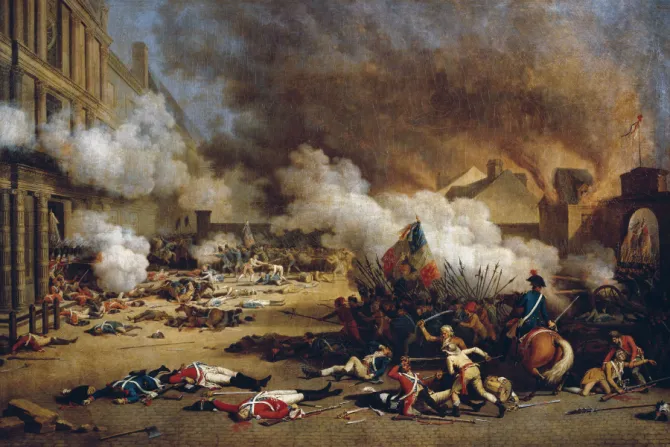Vatican City, Jun 22, 2016 / 05:02 am
In just two days in early September of 1792, approximately 1,200 people were slaughtered by revolutionaries in France.
Of the dead, approximately 200 were Roman Catholic priests and religious, most of whom were killed on Sept. 2 in the garden of a Carmelite monastery which had been captured and turned into a prison.
On October 16, Pope Francis will canonize one of them – Blessed Solomon Leclercq.
Blessed Solomon Leclercq was born Guillaume-Nicolas-Louis in Boulogne, France in 1745, the son of a wealthy wine merchant.
In 1767, at 21 years old, he entered the novitiate of the Lasallian Brothers of the Christian Schools, a teaching order founded by Saint John Baptist de La Salle, and took the religious name Solomon.
During his time in the community, he served as a teacher, as a director of novices, as a bursar for a school, and eventually as secretary to Brother Agathon, the Superior General of the order. He was known for his great love of people and his hard work.
In 1790, with the French Revolution underway, the Civil Constitution of the Clergy gave the state complete control over the Church in France. The government began selling Church property and requiring all clergy and religious to make an oath to the government in order for their institutions to maintain their legal, operating status.
Like many clergy at the time, most of the brothers of Blessed Solomon's order refused to make the oath, forcing them to eventually abandon their schools and communities.
For this reason, Blessed Solomon was forced to live alone in secrecy in Paris for a time, though he kept in touch with his family through letters, despite being monitored by the government.
In August of 1792, the Legislative Assembly had closed all Catholic schools in Paris and outlawed the wearing of religious habits or vestments in public. Priests who had refused to take the oath required by the Civil Constitution of the Clergy were told to leave the country – and about 25,000 did.
Blessed Solomon, still in Paris, wrote his last letter to his family on Aug. 15, 1792, and that same day he was arrested and imprisoned at the Hôtel des Carmes Carmelite monastery in Paris for refusing the oath.
On Sept. 2, revolutionaries mobbed a transport of approximately 30 priests on their way to prison and killed them all. The mob continued on, and, armed with swords, stormed the Carmelite monastery and slaughtered Blessed Solomon and approximately 150 other priests and religious.
The next day, Sept. 3, the revolutionaries continued on to a Lazarist seminary, where they killed most of the priests and students. The death tolls for what became known as the September Massacres range from 1,247 to 1,368 people.
On Oct. 17, 1926, Pope Pius XI beatified Blessed Solomon as well as 188 Catholic martyrs who died during the September massacre. Solomon was the first martyr of his order, though he was soon joined by three others called the Brother martyrs of the hulks of Rochefort, who were also killed for their faith during the French Revolution. The feast day of all four of these martyred brothers is celebrated on Sept. 2.
Normally in the process of canonization, two miracles attributed to the saint are needed – one for beatification, and one for canonization. However, the miracle necessary for beatification in the case of martyrs can be waived, since martyrdom itself is considered a miracle of grace.
The miracle being attributed to the intercession of Blessed Solomon Leclercq, declared by the medical consultant of the Sacred Congregation for the Causes of Saints and approved by Pope Francis, is the inexplicable cure of a Venezuelan girl who had been bitten by a venomous snake.
(Story continues below)
On Oct. 16 of this year, Pope Francis will canonize Blessed Solomon Leclercq along with five other saints, including Manuel González García, a Bishop of Spain, Lodovico Pavoni, an Italian priest, Alfonso Maria Fusco, priest and founder of the Sisters of St. John the Baptist, and Elizabeth of the Trinity, a French carmelite nun considered a "spiritual sister" of St. Therese of Lisieux.
Photo credit: www.shutterstock.com.


